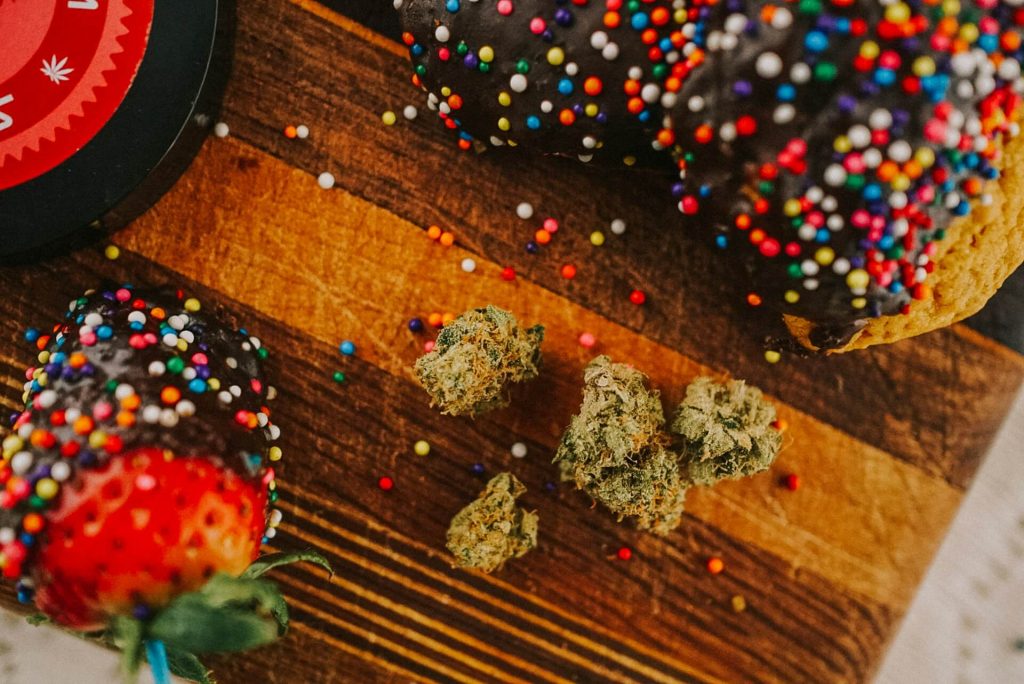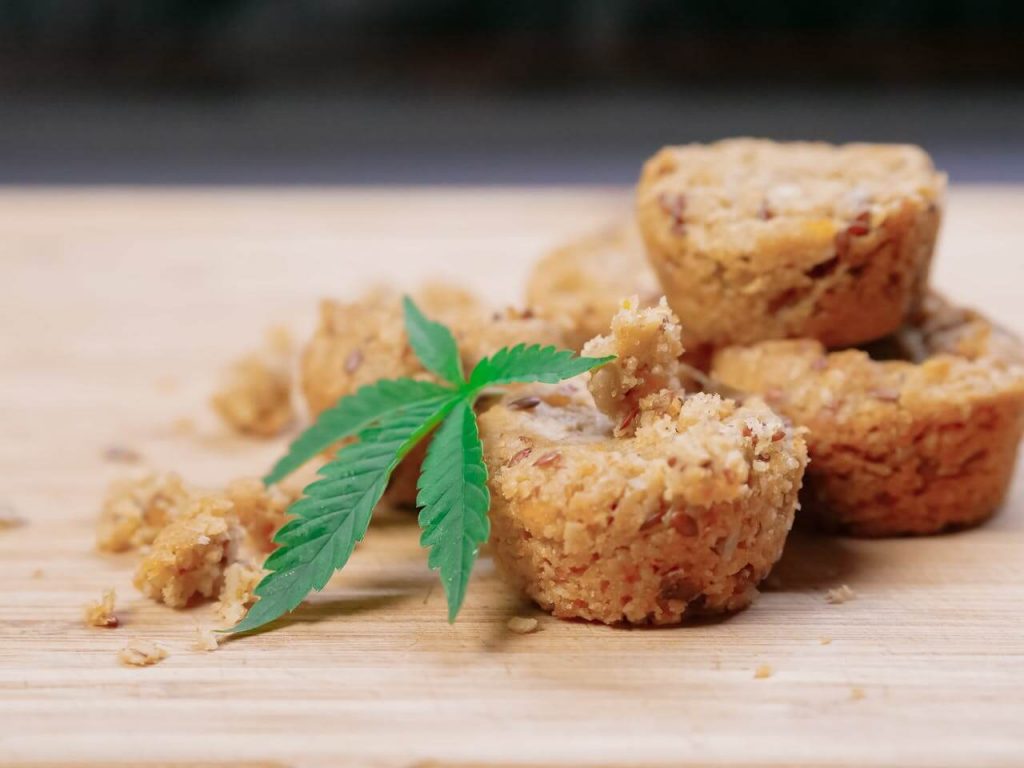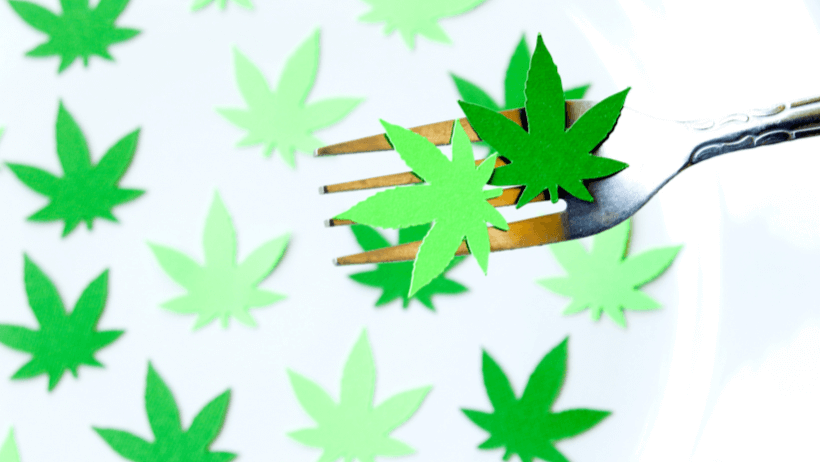Key Takeaways
- Onset times vary from 30 minutes to 2 hours, influenced by factors like metabolism, dosage, and type of edible.
- Begin with a low dosage and gradually increase to avoid overconsumption and ensure a controlled experience.
- Choose the right time and setting, read product labels carefully, and consult a healthcare provider if needed.
Cannabis edibles have seen a surge in popularity across the USA, with the market projected to reach $12 billion by 2025. Their appeal lies in the convenience and discretion they offer, along with the promise of long-lasting effects.
For new and experienced users alike, understanding how long edibles take to kick in is essential for a safe and enjoyable experience. Unlike other forms of cannabis consumption, edibles work differently, requiring time for digestion before their effects are felt.
This guide will explore the factors that influence onset time, helping you make informed decisions that fit your lifestyle.

What Are Edibles?
Edibles are cannabis-infused products, including foods and beverages, that provide a smoke-free option for consuming cannabis. Found in forms like gummies, brownies, chocolates, and drinks such as teas or sodas, they are valued for their ease of use and discreet nature.
Edibles are widely used for their controlled, long-lasting effects, making them a preferred option for managing chronic pain, anxiety, or loss of appetite.
Because they are processed through the digestive system, consuming cannabis edibles takes longer to take effect but delivers results that last much longer compared to smoking cannabis or other methods.
Factors Affecting Onset Time for Edibles
The time it takes for edibles to kick in can vary widely, influenced by several personal and product-specific factors. Understanding these elements can help you better anticipate your experience and plan accordingly.
Individual Factors
- Body Weight and Metabolism: A faster metabolism or lower body weight can result in the effects of edibles being felt more quickly, whereas individuals with a slower metabolism or higher body weight might experience a delayed onset.
- Tolerance to Cannabis: Regular cannabis users, especially those with a high tolerance, may find that the effects take longer to manifest or feel less pronounced compared to those who are new to cannabis use.
- Presence of Food in the Stomach: Eating cannabis-infused edibles on an empty stomach may lead to faster absorption and quicker effects, while consuming them alongside or after a meal can significantly slow down the digestion process and delay the onset.
Type and Form of Edible
The type and form of edible you choose can significantly influence how quickly the effects take hold. THC-dominant edibles typically produce a more pronounced psychoactive experience, while CBD-dominant options are often favored for their calming and therapeutic effects without the “high.”
Additionally, the form of the edible plays a role: gummies and chocolates, for example, may take longer to digest than beverages, which can start to absorb more quickly in the stomach.
Baked goods, such as brownies, fall somewhere in between, offering a balance of flavor and slower absorption due to their dense composition.
Dosage
The dosage of an edible plays a critical role in determining both its onset time and overall effects. Low-dose edibles, typically containing 2.5 to 5 milligrams of THC, are a good starting point for beginners, offering subtle and manageable effects.
High-dose edibles, on the other hand, can take longer to process and may result in more intense, prolonged experiences. Microdosing—consuming very small amounts of cannabis—has gained popularity for those seeking minimal psychoactive effects.
While microdosing can provide mild benefits like relaxation or focus, its onset time is often faster as the body processes smaller amounts more efficiently to avoid a cannabis overdose.
Typical Onset Time for Edibles
Average Timeframe

The average onset time for cannabis edibles generally ranges from 30 minutes to 2 hours, though this can vary depending on multiple factors. For most users, effects begin to appear gradually, starting with subtle changes that build over time.
The delay occurs because edibles must pass through the digestive system and be metabolized by the liver before their active compounds, such as THC or CBD, enter the bloodstream.
While this slower process can require some patience, it’s worth noting that the effects of edibles also tend to last much longer compared to other consumption methods. Understanding this typical timeframe helps prevent overconsumption and ensures a more controlled experience.
Why the Variation?
The variation in onset time for edible cannabis is largely due to the way the body processes it. Unlike smoking or vaping cannabis, which delivers cannabinoids directly to the bloodstream, edibles must first pass through the digestive system.
During this process, the liver metabolizes the active compounds, such as THC, into more potent forms that then enter the bloodstream. This phenomenon, known as the “first-pass effect,” explains why edibles take longer to kick in but often produce stronger, longer-lasting effects.
Factors like individual metabolism, liver function, and the presence of other food in the stomach can further influence this timeframe, creating variability in how quickly edibles take effect.
Quick-Acting Edibles
Quick-acting edibles, such as sublingual and cannabis-infused beverages, offer a faster alternative to traditional edibles. Sublingual, like tinctures or dissolvable strips, are absorbed directly into the bloodstream through the tissues under the tongue, bypassing the digestive system entirely.
This method significantly reduces onset time, often producing effects within 15 to 30 minutes. Similarly, beverages are partially absorbed in the stomach, allowing their effects to be felt more quickly compared to solid edibles like gummies or brownies.
These options are ideal for those seeking faster relief or who want a more predictable experience without the longer wait associated with traditional edibles.
How To Tell If an Edible Is Taking Effect
Physical and Mental Signs
Recognizing when edible cannabis products are taking effect involves tuning into both physical and mental changes. Common signs include a sense of relaxation or calm spreading through the body, often accompanied by feelings of euphoria or heightened mood.
Many users also notice an increase in appetite, often referred to as the “munchies.” Mentally, you might experience a shift in perception, with sounds, colors, or thoughts feeling more vivid or engaging. On the physical side, there may be subtle changes in coordination or a pleasant heaviness in the limbs.
These effects build gradually, so it’s important to stay patient and allow time for the edible to fully take hold before consuming more.
Importance of Patience
Patience is key when taking edibles to ensure a safe and enjoyable experience. Because edibles take longer to take effect, it can be tempting to consume more if you don’t feel immediate results.
However, this can lead to overconsumption, resulting in effects that are far stronger and longer-lasting than anticipated. Waiting the recommended time—often up to two hours—helps you gauge the full impact before deciding if more is necessary.
Practicing patience not only prevents discomfort but also allows for a controlled and balanced experience with cannabis products.
Tips for a Safe Edible Experience
Tip #1: Start Low and Go Slow
A safe, edible experience starts with the golden rule: start low and go slow. For beginners, it’s best to begin with a low dosage, typically 2.5 to 5 milligrams of THC, to understand how your body responds.
Edibles can produce potent, long-lasting effects, so gradually increasing the dose only after you’ve assessed the impact is essential. Rushing into higher doses can lead to overwhelming experiences that are difficult to manage.
By starting small and pacing yourself, you can enjoy the benefits of edibles while maintaining control and comfort throughout the experience.
Tip #2: Plan Your Timing
Planning your timing is crucial for a safe and enjoyable edible experience. Since edibles take time to kick in and their effects can last several hours, it’s important to choose a time when you’re free from responsibilities or interruptions.
A comfortable setting also plays a big role—opt for a familiar and relaxing environment where you feel at ease. Avoid consuming edibles before important tasks or in high-pressure situations. By planning, you can fully enjoy the experience in a way that fits your schedule and surroundings.
Tip #3: Stay Informed
Staying informed is essential for a responsible and positive edible experience. Begin by carefully reading product labels to understand the dosage, type of cannabinoids (such as THC or CBD), and any additional ingredients.
This information helps you choose a product that aligns with your needs and tolerance level. If you’re new to edibles or have underlying health concerns, consulting a healthcare provider can provide valuable guidance.
They can help you navigate potential interactions with medications or conditions, ensuring a safer experience. Being informed empowers you to make choices that suit your lifestyle and preferences.
Frequently Asked Questions (FAQs)
Can I Speed Up The Effects Of Edibles?
While traditional edibles take time to kick in due to digestion, sublingual options like tinctures or lozenges can provide quicker effects. These products absorb directly into the bloodstream through the tissues under the tongue, bypassing the digestive process.
Alternatively, cannabis-infused beverages can also act faster than solid edibles, offering a more immediate experience. If you’re looking for a quicker onset, these alternatives may be worth exploring.
What Should I Do If I Feel Overwhelmed By An Edible?
If you consume too much and feel overwhelmed, there are several ways to ease the effects. Start by staying calm and finding a comfortable, quiet place to relax. Hydration is important—drink water or herbal tea to stay grounded.
Some people find that consuming CBD can help counteract the psychoactive effects of THC from a cannabis plant. Simple calming techniques, like deep breathing or listening to soothing music, can also help you ride out the experience until it subsides.
Are Edibles Safe For Everyone?
Edibles are not suitable for everyone. Pregnant individuals and those with certain medical conditions, such as severe heart issues or mental health concerns, should avoid them.
If you’re on prescription medications, it’s essential to consult with a healthcare provider to ensure there are no potential interactions. Staying informed about your personal health and circumstances can help you decide if edibles are the right choice for you.
Conclusion
Understanding how edibles work and the factors that influence their effects is key to a safe and enjoyable experience. From choosing the right dosage and form to planning your timing and staying informed, responsible consumption ensures you get the most out of your edible journey.
Always start low, go slow, and allow time for the effects to fully develop. By experimenting within safe limits, you can discover what works best for you while enjoying the unique benefits that edibles have to offer.

